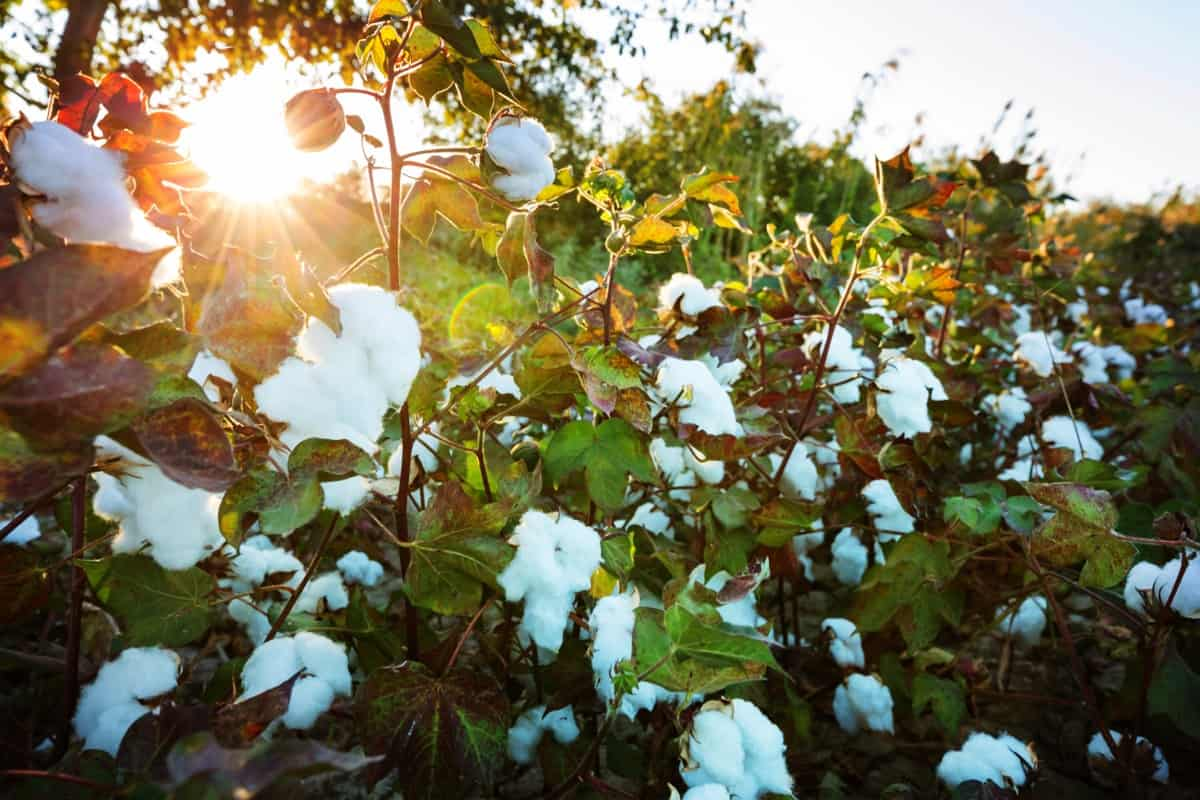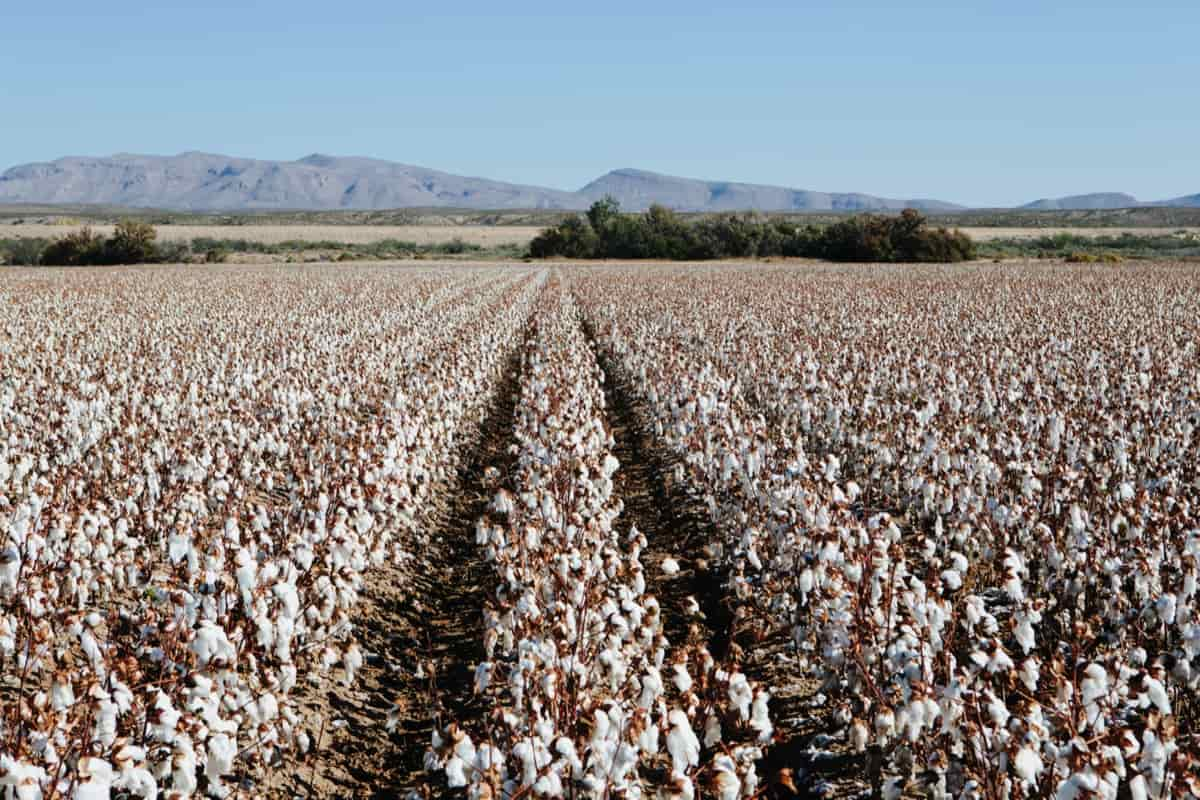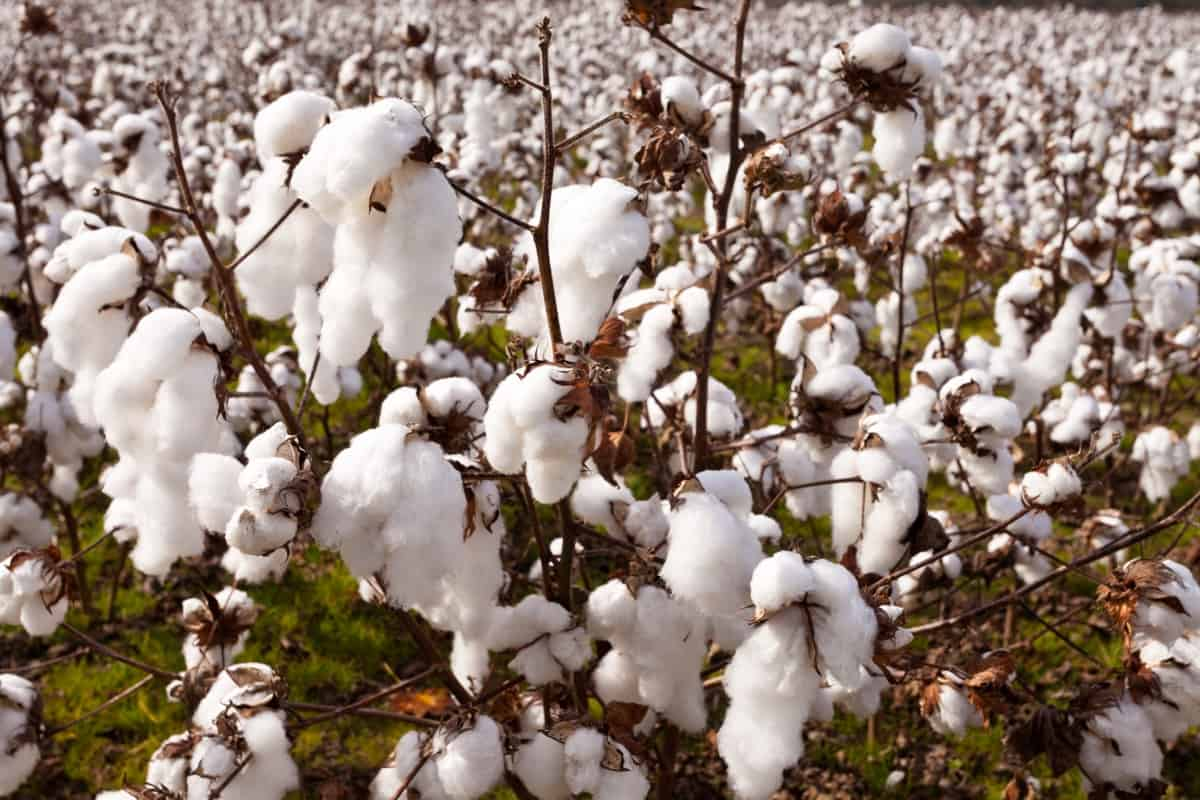Welcome to the world of cotton farming! To ensure a healthy and productive cotton crop, it’s crucial to understand the right fertilizer dose and schedule. Cotton requires specific nutrient requirements for optimal growth and yield. In this guide, we will explore the essential fertilizer needs of cotton, offer recommendations for dose and application timing, and provide valuable insights on effective fertilizer management. Whether you’re a seasoned cotton farmer or new to the field, this information will help you make informed decisions to maximize your cotton production.

Cotton Fertilizer Requirements and Recommendations
How Much Fertilizer Does Cotton Need?
Cotton plants require approximately 100-150 kilograms of NitrogenNitrogen (N) per hectare. However, this may vary depending on soil fertility and local conditions. Regarding phosphorus (P), cotton typically needs around 40-60 kilograms per hectare, while potassium (K) requirements range from 60-100 kilograms per hectare. These nutrient ratios help support healthy growth, development, and fiber production. It’s important to note that fertilizer application should be adjusted based on soil analysis results to address deficiencies or imbalances.
What Are the Nutrient Requirements for Cotton?
Cotton has specific nutrient requirements. On average, it requires about 100-150 kg/ha of NitrogenNitrogen (N), 40-60 kg/ha of phosphorus (P), and 60-100 kg/ha of potassium (K) to support healthy growth and fiber production. These ratios may vary depending on soil fertility and local conditions.
When Should I Apply Fertilizer to My Cotton Crop?
- Before planting: This is the best time to apply fertilizers, such as slow-release nitrogen fertilizers, that will be released slowly over time.
- At planting: This is a good time to apply fertilizers that will be quickly available to the plants, such as ammonium sulfate.
- During the vegetative stage: This is the time when the plants are actively growing and require the most nutrients. You may need to apply fertilizer several times during this stage.
- During flowering: This is another important time to apply fertilizer, as the plants need nutrients to produce flowers, bolls, and bigger boll sizes. It is recommended to apply twice if needed.
Cotton Fertilizer Dosing Guidelines: Best Fertilizer Schedule
- Cotton plants require high levels of NitrogenNitrogen, phosphorus, and potassium.
- A common fertilizer schedule is to apply 200 kg of N-P-K 20-10-10 per hectare during sowing and 200 kg of N-P-K 20-10-10 per hectare during flowering.
- Another common scheme is to apply 250 kg of ammonium nitrate, 181 kg of N-P-K 0-46-0, and 181 kg of N-P-K 0-0-50 per hectare throughout the year.
- These quantities are normally spread in 8 equal applications. These proportions are usually used in 8 equal applications, starting after sowing and ending six weeks after flowering.
- Foliar applications of KNO3 can also be used once a week after the first flower appears.
Nitrogen Requirements for Cotton Crops
Cotton plants require a lot of NitrogenNitrogen, typically 50 kg of N per expected bale of lint. This can be applied in multiple doses throughout the growing season, with a common schedule being 200 kg of N-P-K 20-10-10 per hectare during sowing and 200 kg of N-P-K 20-10-10 per hectare during flowering. The best method for your crop will depend on the stage of plant growth.
Phosphorus and Potassium Recommendations for Cotton
Phosphorus: Cotton plants require 20-65 kg of phosphorus per acre. Phosphorus is needed for plant growth and development. It is involved in the production of energy and the formation of new flowers and bolls.
Potassium: Cotton plants require 45-90 kg of potassium per acre. Potassium is needed for plant growth and development. It is involved in the regulation of water balance, the transport of nutrients, and stress resistance. It is important to test your soil before applying phosphorus or potassium fertilizer.
Balanced Nutrient Ratios for Cotton Plants
- The most important nutrient for cotton plants, with a recommended ratio of 4:1:2 for Nitrogen, phosphorus, and potassium.
- Phosphorus: Needed for root development and early growth.
- Potassium: Needed for flowering and boll development.
- Other nutrients: Depending on the soil type and plant stage, may also be needed.
In case you missed it: Best and Latest Pesticide for Cotton Plants to Control Insect Pests

Fertilizer Management Practices for Sustainable
- Soil testing: Test your soil before applying fertilizer to determine the nutrient levels in the soil.
- Use the right fertilizer: Choose the right fertilizer for your crop and the soil type. Some fertilizers are more likely to leach out of the soil than others.
- Apply fertilizer at the right time: Apply fertilizer at the right time of year and the right growth stage for your crop.
- Use efficient application methods: Use efficient application methods, such as banding or side-dressing, to minimize fertilizer loss.
- Rotate crops: Rotating crops helps to maintain soil health and reduce the need for fertilizer.
- Cover crops: Cover crops help improve soil health and reduce erosion. They can also help to reduce the need for fertilizer.
Cotton Production Importance of Micronutrients in Cotton Fertilizer Application
Micronutrients are crucial for cotton plant growth and development, impacting crop yield and quality. Boron, copper, iron, manganese, and zinc are essential micronutrients for cell division, flowering, photosynthesis, nitrogen metabolism, chlorophyll production, respiration, and protein synthesis. Incorporating micronutrients in cotton fertilizer ensures plants receive the nutrients necessary for thriving.
Fertilizer Application Methods for Cotton Fields
Fertilizer application methods for cotton fields include broadcast, band, side-dressing, and foil. Broadcast is the most common method, spreading fertilizer evenly throughout the field. The band is more effective due to its placement closer to the roots and is less likely to result in fertilizer loss.
Side-dressing adds NitrogenNitrogen to the soil, which is crucial for cotton plants. Foliar sprays fertilizer solution on the leaves of the plants, addressing nutrients not readily absorbed by the roots. Consult a local agricultural extension office for recommendations for your specific situation.
Fertilizer Timing During Different Growth Stages of Cotton
The most important nutrient for cotton is NitrogenNitrogen, which is applied at several stages of growth, including planting, vegetative growth, and boll filling. Phosphorus is also important for cotton and is applied at planting. Potassium is applied at several stages of growth, including vegetative growth and boll filling. Depending on the soil test results, other nutrients such as boron, sulfur, and zinc may also be needed.
Cotton plants require specific nutrients at different growth stages, such as planting, vegetative growth, and boll filling. Planting requires NitrogenNitrogen, phosphorus, and potassium, while vegetative growth requires NitrogenNitrogen and potassium for leaf, stem, and root growth. Boll filling requires NitrogenNitrogen, potassium, and boron to produce cotton bolls. Fertilizer timing may vary depending on the variety of cotton, soil type, and climate.
Adjusting Fertilizer Doses Based on Soil Analysis for Cotton
- Cotton plants need different nutrients at different times during their growth cycle.
- Nitrogen is most needed during boll filling, but more Nitrogen can be beneficial.
- Phosphorus is needed all season long but is best applied at planting.
- Potassium and boron are most needed during boll filling.
- Phosphorus, potassium, calcium, and magnesium stay in the soil until disturbed, but Nitrogen, boron, and sulfur can be lost from the root zone.
In case you missed it: How to Grow Organic Cotton: Best Cultivation Practices

Farming Effect of Soil pH on Cotton Fertilizer Requirements
- Soil pH is a measure of the acidity or alkalinity of the soil.
- Cotton plants prefer a soil pH of 6.0 to 6.5.
- At soil pHs below 5.5, cotton plants may not be able to absorb the nutrients they need, even if those nutrients are present in the soil.
- With soil pH above 7.0, cotton plants may be susceptible to nutrient deficiencies, especially iron and manganese.
- Therefore, it is important to test the soil pH before applying fertilizer to cotton plants.
Conclusion
Cotton plants require a balanced diet of nutrients to thrive. The specific nutrient requirements will vary depending on the variety of cotton being grown, the soil type, and the climate. It is important to test the soil before applying fertilizer to determine the nutrient levels in the soil. By following the recommended fertilizer dose and schedule, you can help ensure that your cotton plants get the nutrients.
- Feed Your Flock for Less: Top 10 Tips to Save on Chicken Feed
- Ultimate Guide to Ossabaw Island Hog: Breeding, Raising, Diet, and Care
- Hatching Answers: The Top 10 Reasons Your Chickens Aren’t Laying Eggs
- Eggs and Economics: Breaking Down the Cost of Raising Backyard Chickens
- Defend Your Greens: Proven Methods to Keep Iguanas Out of Your Garden
- Ultimate Guide to Cinnamon Queen Chicken: A Comprehensive Guide for Beginners
- Ultimate Guide to California Tan Chicken: Breeding, Raising, Diet, Egg-Production and Care
- Ultimate Guide to Marsh Daisy Chicken: Breeding, Raising, Diet, and Care
- 10 Types of Chicken Farming Businesses You Can Start for Profits